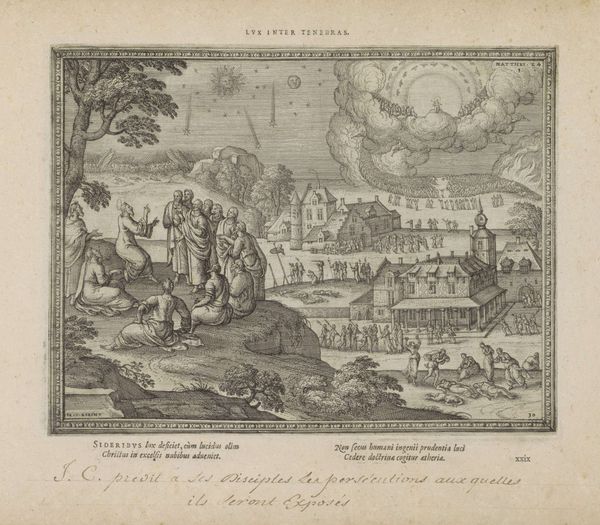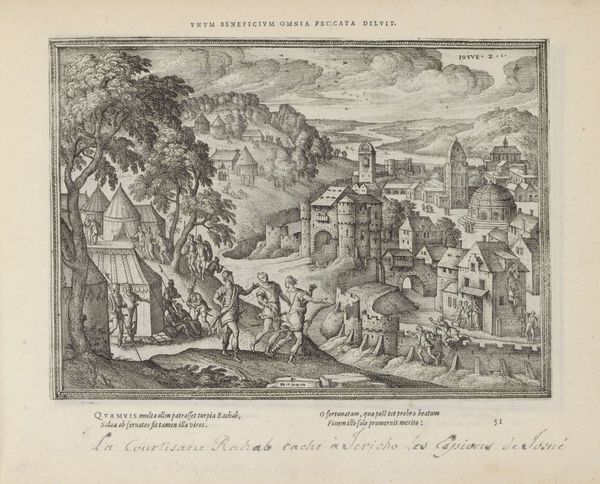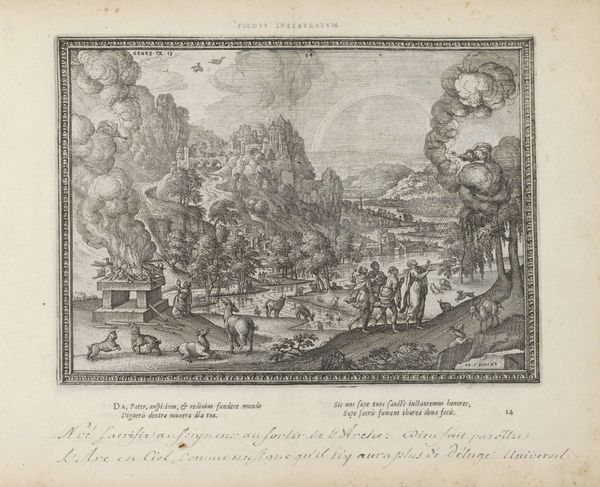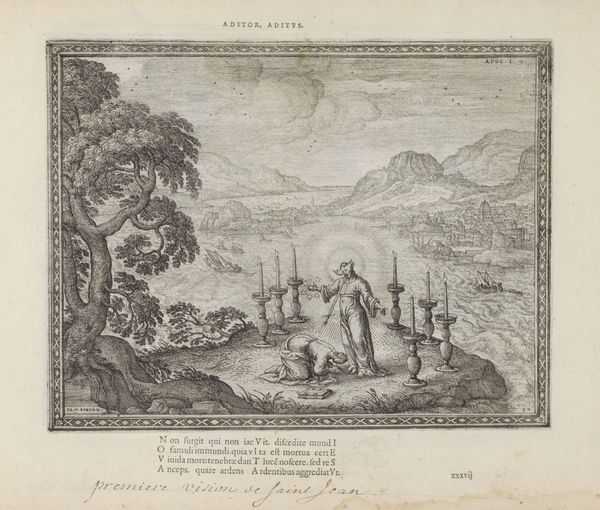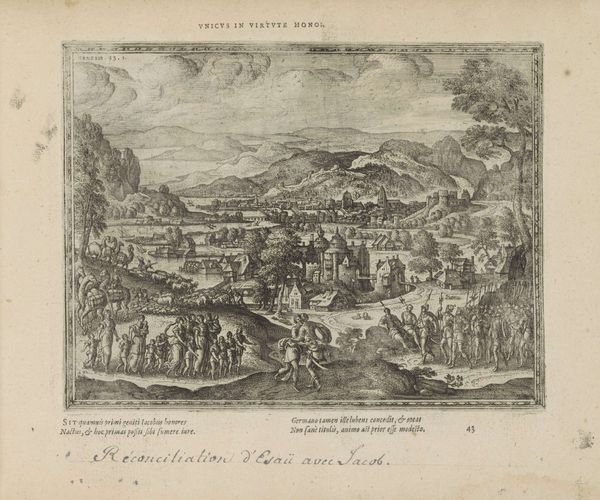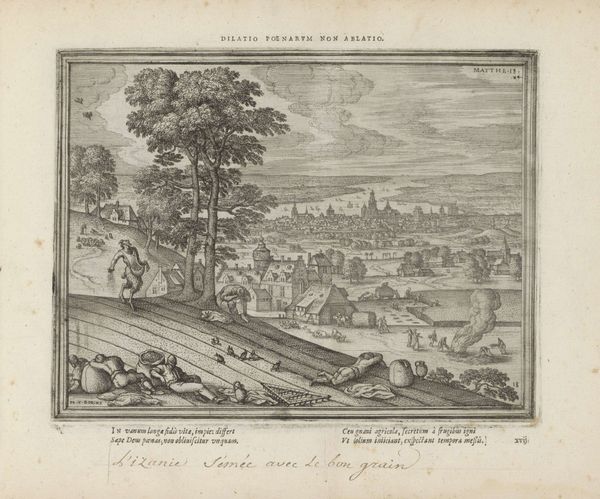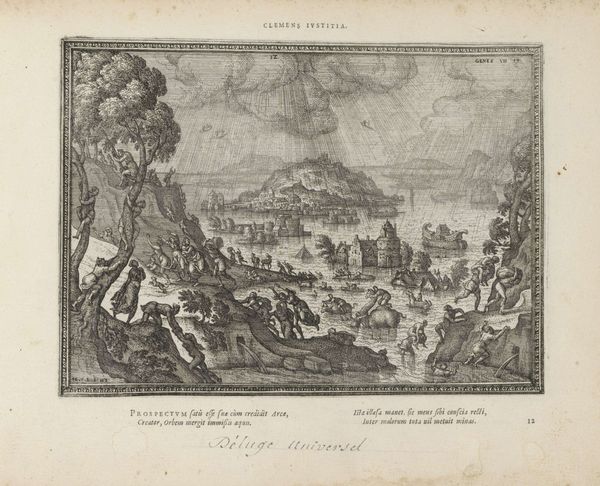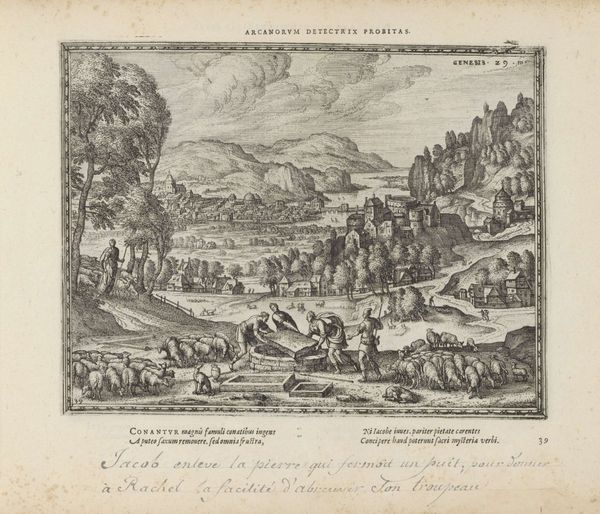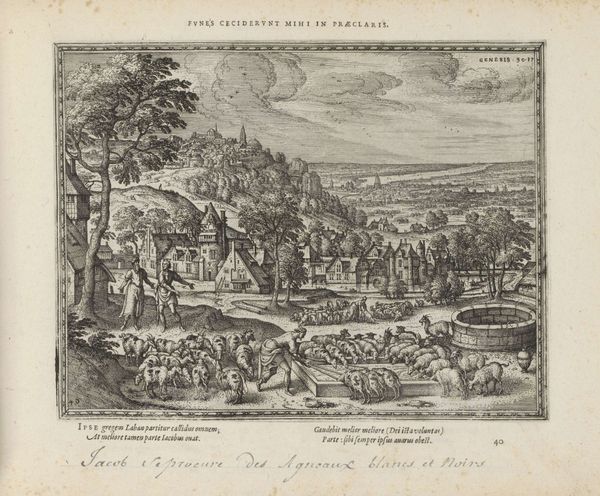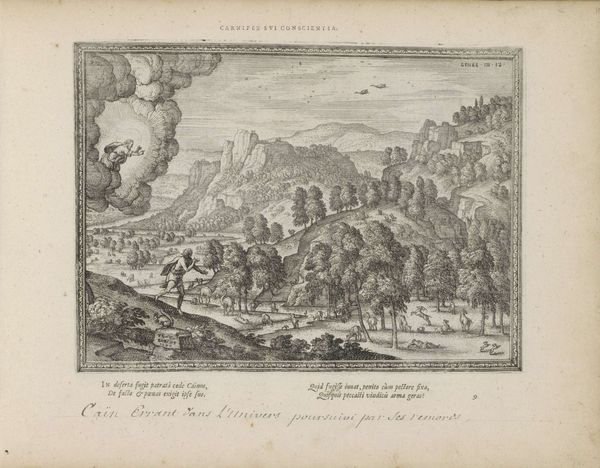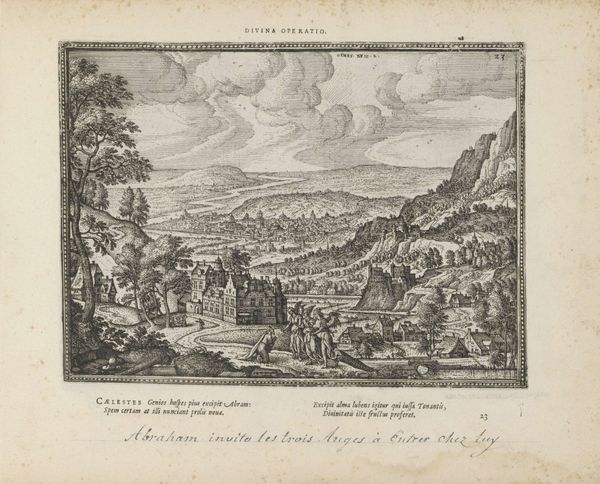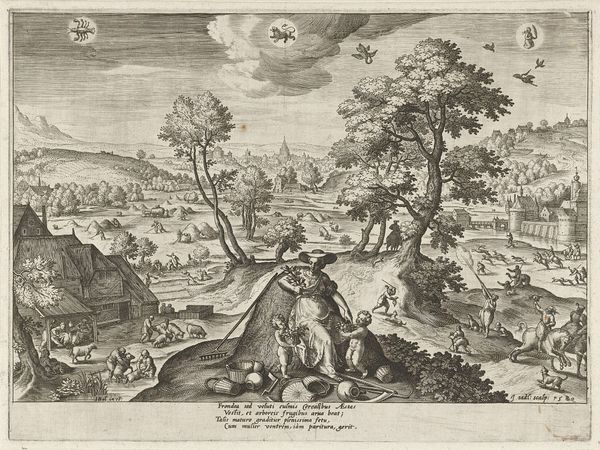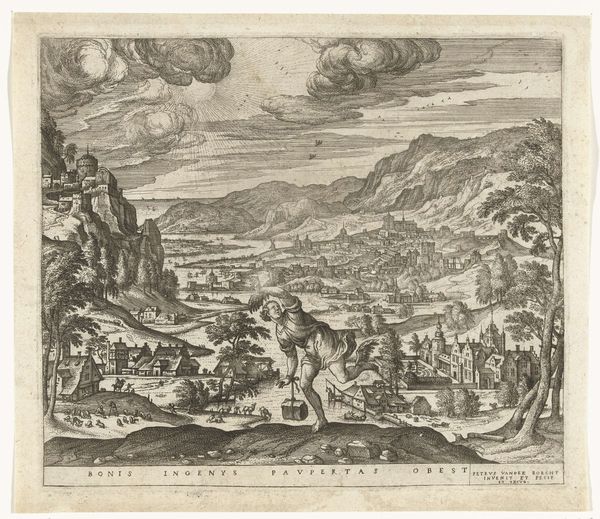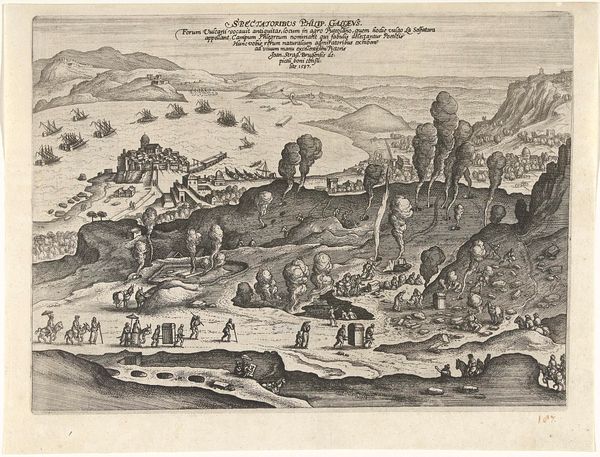
print, engraving
pencil drawn
aged paper
toned paper
light pencil work
allegory
narrative-art
pencil sketch
sketch book
landscape
perspective
figuration
form
personal sketchbook
line
sketchbook drawing
cityscape
pencil work
history-painting
northern-renaissance
sketchbook art
engraving
Dimensions: height 190 mm, width 244 mm
Copyright: Rijks Museum: Open Domain
Curator: This engraving by Pieter van der Borcht the Elder, dating from around 1582 to 1613, depicts "Johannes op Patmos en het nieuwe Jeruzalem" - John of Patmos and the New Jerusalem. Editor: My first thought is of the tonal qualities achieved through simple engraving techniques – look at that hazy rendering of light emanating from the divine figure hovering above the city. Curator: It’s interesting to note van der Borcht’s likely use of various workshops. The paper itself tells a story – aged, with subtle toning, indicating a deliberate choice, possibly for durability or aesthetic reasons reflecting printmaking practices during the Northern Renaissance. Editor: Speaking of context, the image is very striking. The depiction is from the Book of Revelation, isn't it? We see John the Evangelist, small at the lower left, under the shade of the tree. He’s dwarfed by the vision of the New Jerusalem descending from the heavens, promised to humanity in its purified state. Curator: Exactly! The engraving process itself involves a division of labour: from initial sketch to finished print. There’s also an economy of line here. Notice the controlled pencil work, almost like a mechanical rendering meant for mass distribution. Editor: Absolutely. This speaks to the growing accessibility of religious imagery during this period, making these complex allegories more publicly available. There is a clear interplay between theological message and broader societal narratives. Curator: Beyond the religious themes, I see a fusion of craftsmanship, from paper selection to intricate engraving, serving both practical and symbolic roles within early print culture. Editor: I'm intrigued by the blending of personal faith, public piety, and the developing role of art in communicating shared religious experience to wider audiences. Curator: A blending beautifully embodied by this piece, wouldn’t you agree? Editor: I would. This has made me think about art’s enduring place as not just religious reflection but also public interpretation of beliefs and traditions.
Comments
No comments
Be the first to comment and join the conversation on the ultimate creative platform.
